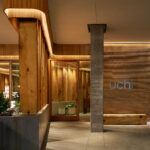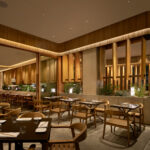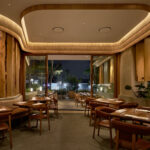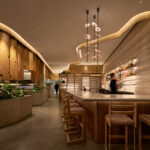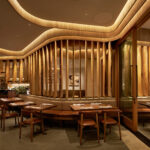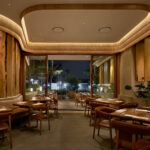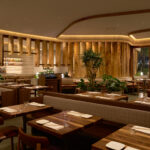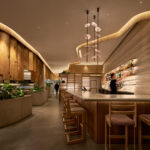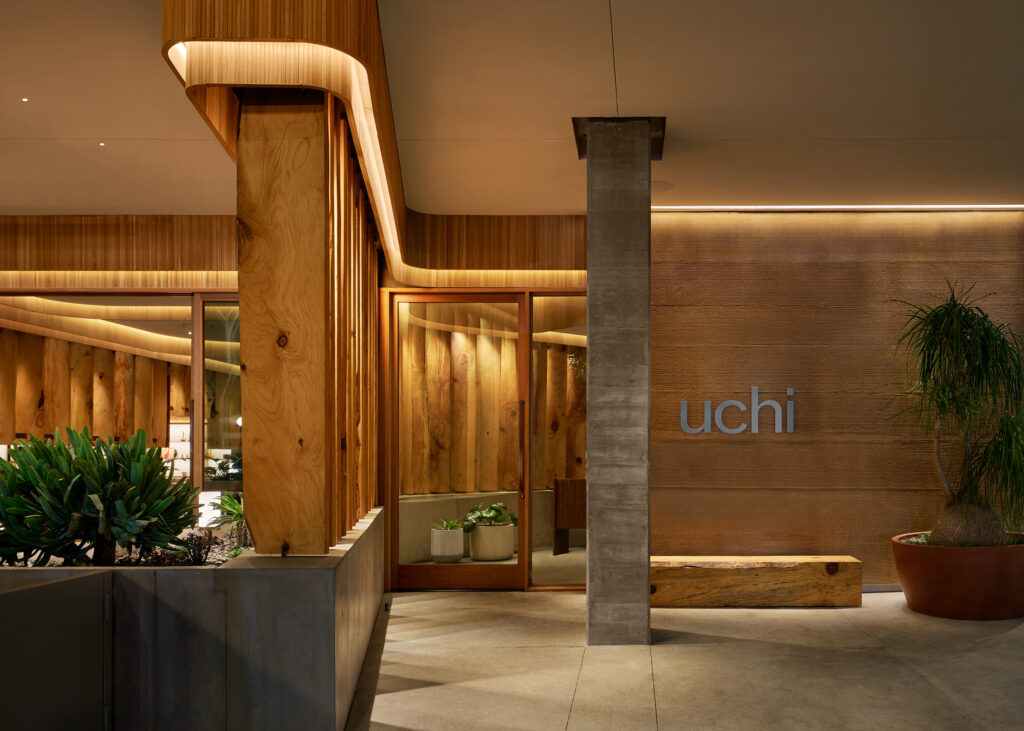Design Dish: Uchi West Hollywood
Author:Abigail StoneArchitecture and design studio ORA navigates the challenges of a brutalist space to create a serene setting that offers the ideal backdrop to the innovative cuisine of Uchi, the first West Coast outpost from the famed Japanese restaurant chain
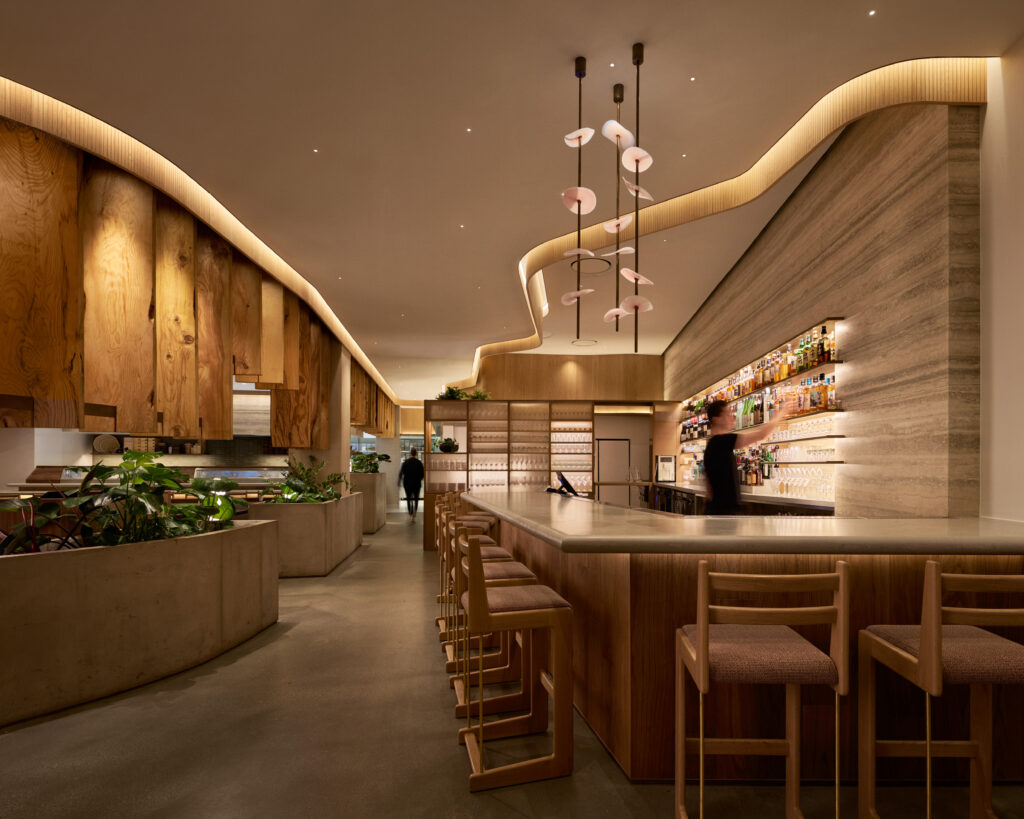
Since its founding in Austin in 2003, Uchi, the legendary sushi restaurant from James Beard Award-winning Chef Tyson Cole, in collaboration with with Texas-based Hai Hospitality Group, has expanded to include outposts in Miami, Dallas, Denver, Houston and Scottsdale. The name, which means “house” in Japanese, highlights the restaurant’s focus on making guests feel welcome.
“Despite having the same name, each restaurant is unique its design,” explains architect Oonagh Ryan, founding principal of ORA, the firm behind Agnes Restaurant & Cheese Shop and Auburn Restaurant, among others, who was tasked with the design of the West Hollywood space. “That was especially important given that this was going to be their first entry into the West Coast.” That meant creating a space that felt very L.A. while steering clear of anything that smacked of cliche. “We knew it had to be wood. We knew it had to be organic. They care about presentation and design and craft,” says Ryan, ticking off the directives on her fingers. “And the space would need to tap into the indoor-outdoor feeling that is so much a part of the Los Angeles design vernacular.”
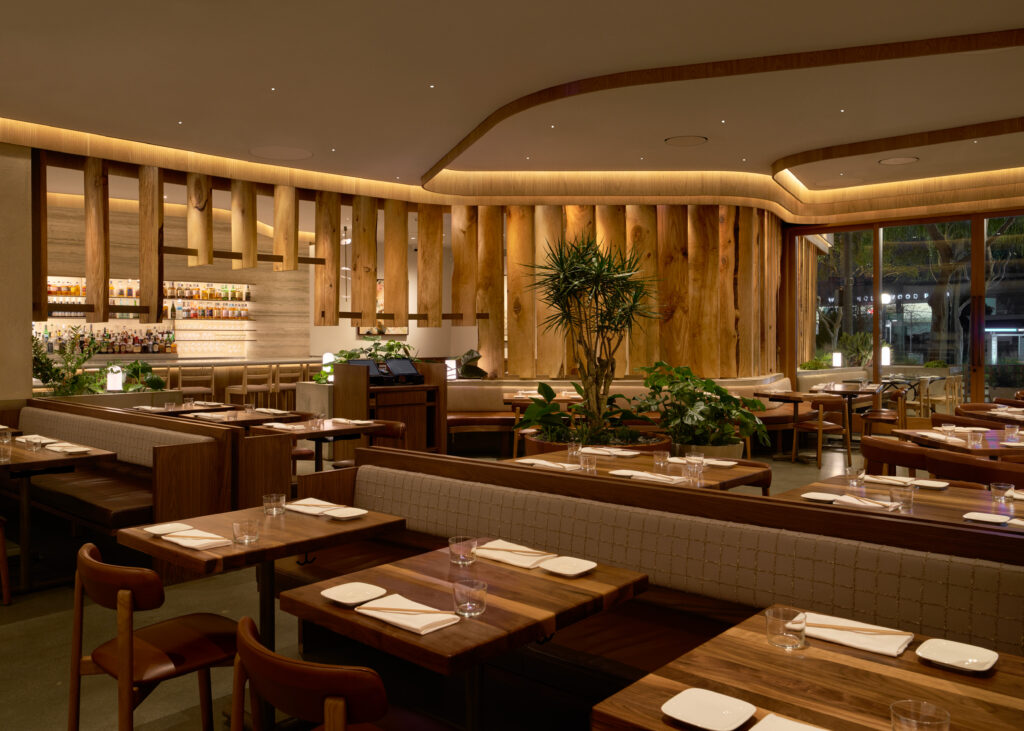
The raw space presented a challenge. Tucked into the bottom corner of a luxury apartment building on the corner of La Peer and Santa Monica Boulevard, where West Hollywood elides into Beverly Hills, it offered a number of issues the firm would need to address: it had a low ceiling, there were large columns interrupting the floor plan, and one side of the restaurant flared out at an angle to match the street’s diagonal thrust. “So what looked like a straightforward box was actually a very difficult starting point,” says Ryan.
Incorporating the exterior of the restaurant into the interior posed another challenge. ORA proposed a curvaceous wood and cement fence. Undulating around the street’s pre-existing trees, it blurs the line between street and restaurant. The patio’s curves and plantings find their echo in the interior, confirming the link between indoors and out. Live-edge wood slabs, milled by Angel City Lumber from 26 fallen trees culled from 14 neighborhoods around Los Angeles, form two spines that snake through the space, playing peekaboo with its various areas—the entry, the cocktail bar, the sushi bar, the main dining room—delicately carving intimate moments out of the sprawling 160 seat space. Their path is mirrored in the design of the hand-troweled acoustic plaster ceiling; the sinuous curves of its wooden fringe, which conceals cove lighting designed by Dot Dash, conjures up Japan’s raked sand Karesansui gardens. Its curvaceousness is reiterated in the comfortable upholstered walnut banquettes, designed by ORA with details inspired by Japanese joinery.
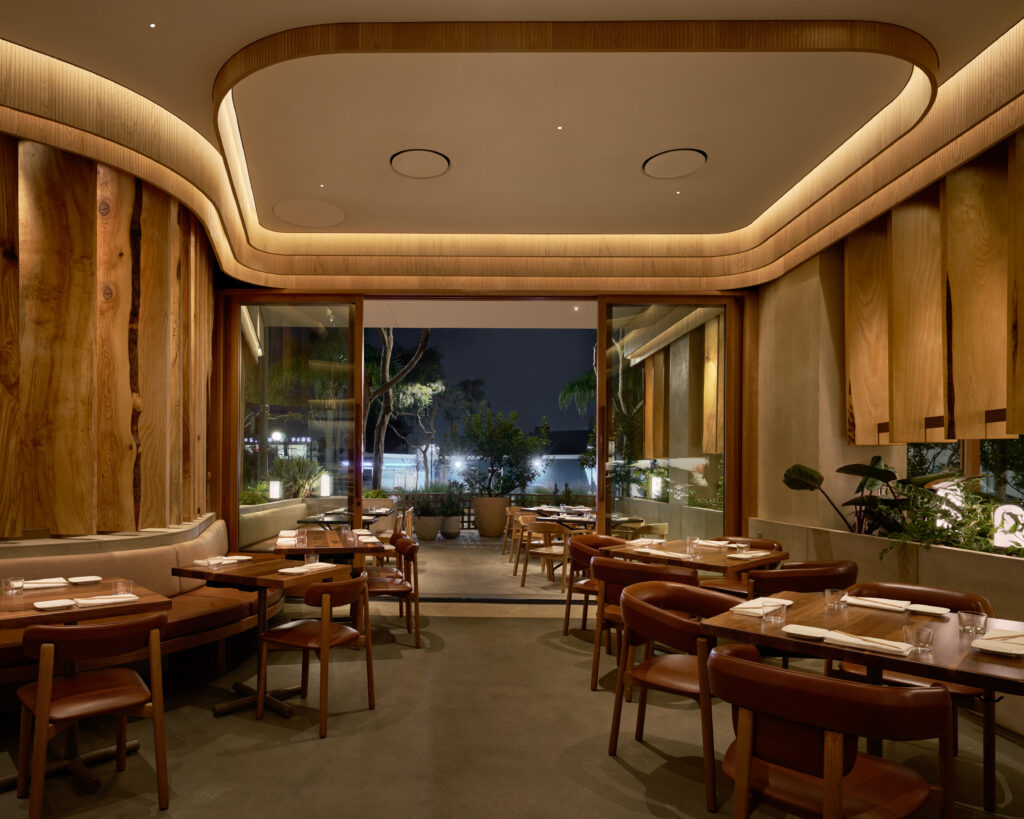
Further anchoring the restaurant in Los Angeles, ORA turned to the city’s coterie of craftspeople and artisans: glass artist Kazuki Takizawa created the delicate handblown cluster of cherry blossoms, illuminated by pin lights, which hangs over the front corner of the cocktail bar; the white oak and brass Cruz barstools are courtesy of Lawson-Fenning; the ceramic Terrah lamp is by Ceramicah.
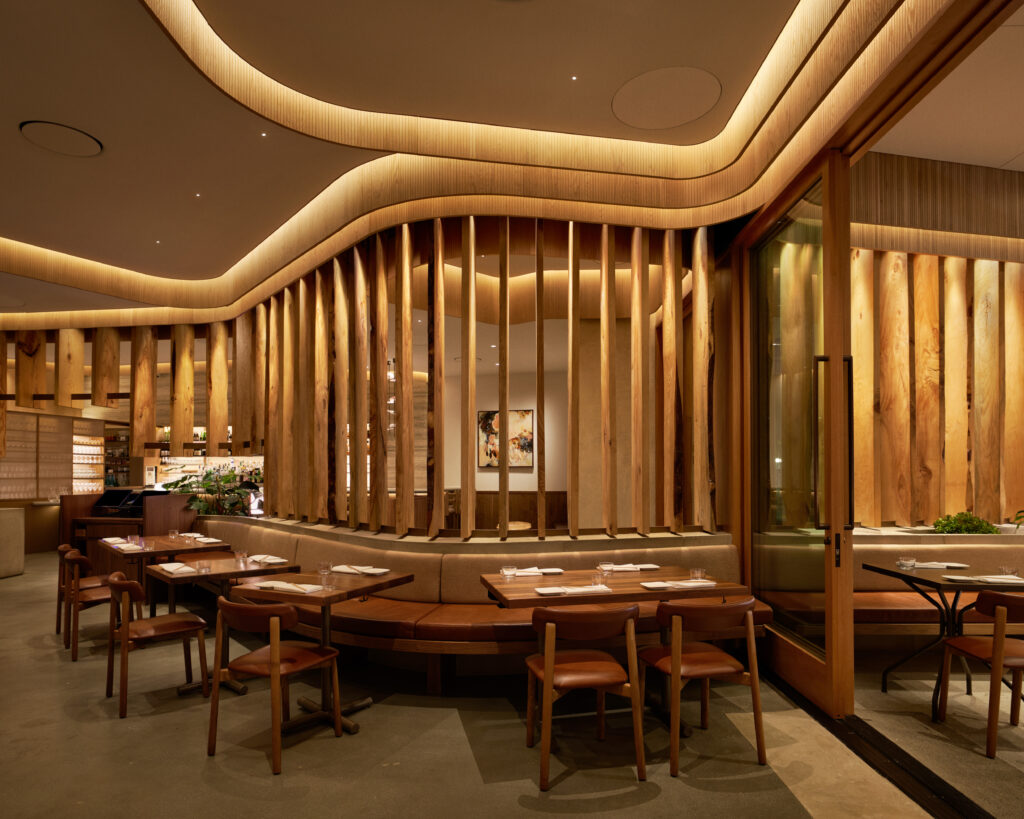
This modulated and serene backdrop is the ideal counterpoint to Uchi’s procession of innovative dishes. From the Uchi Salad, a handheld gift of baby greens wrapped around a piece of daikon and tied with an string of green onion dipped into a cashew pesto, to the hirame usuzukuri, thin slices of flounder offset by intriguing pops of candied quinoa and grassy olive oil and the akami te, bluefin tuna poised against icy watermelon and the bite of thai chili, highlighting Southern California’s incredible produce, seafood and meats.
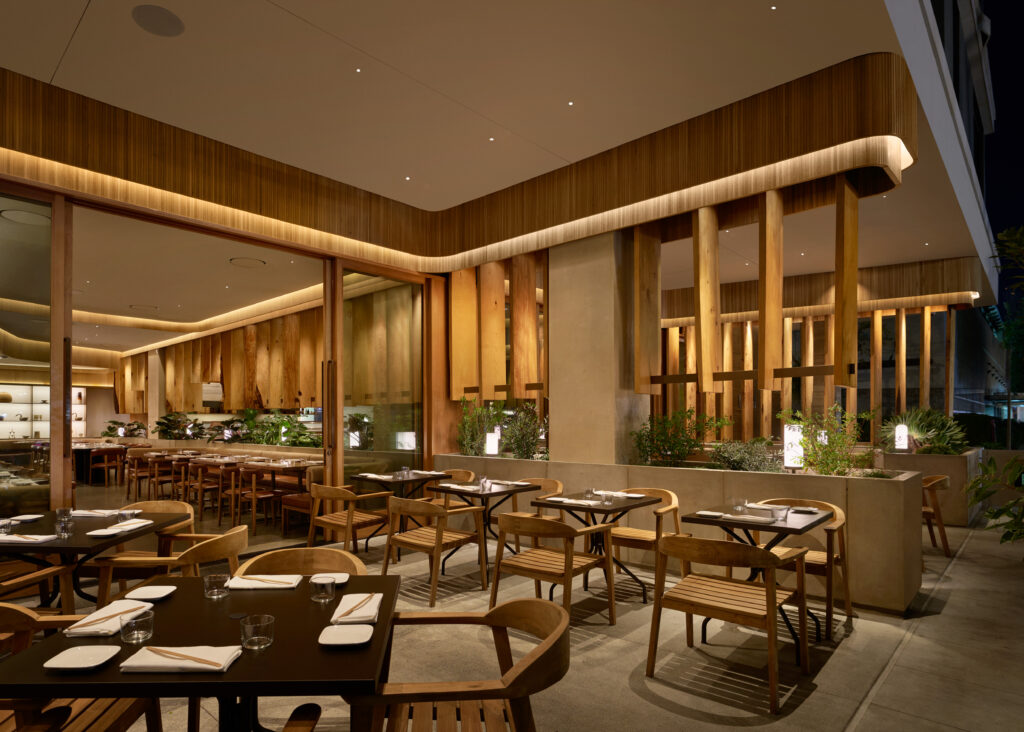
“The design brief was that the restaurant should embody a sense of place, and this was our guiding light.” says Ryan. “We collaborated closely with local artists, makers and craftsmen, elevating humble natural materials to create a sense of surprise and connection to the unexpected natural beauty and spirit of our city. The result is an experience that goes beyond the expected.”
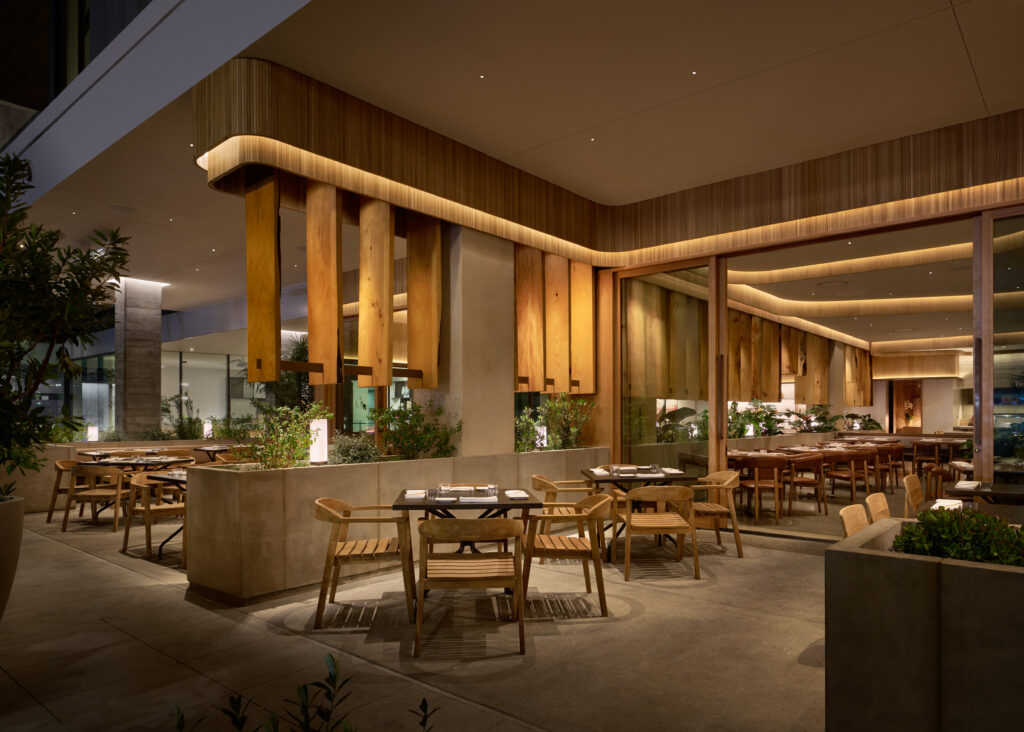
Photo by Eric Staudenmaier Photography.
